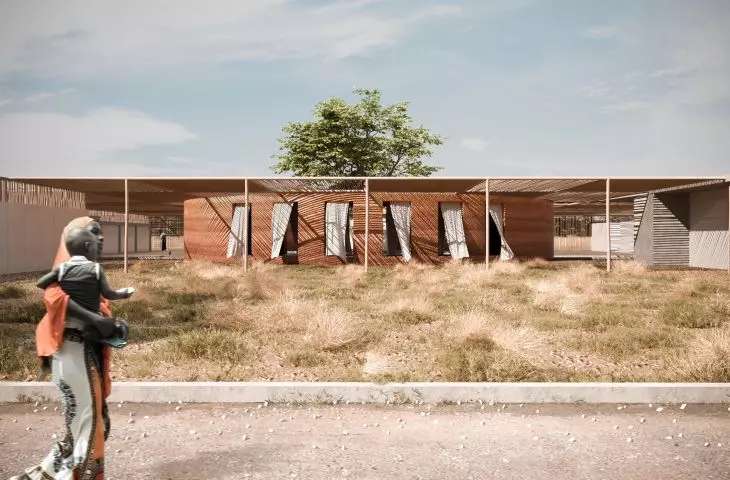Graduates of the Magdalena Abakanowicz University of Arts in Poznan - Agata Holdenmajer and Jagna Przybylska have designed a modern farm in Ghana, providing not only food, but also education and integration of local society. Their project "Along the street" received Third Prize in the international competition Ghana Innovation Farm.
Organized by the Young Architects Competition together with InspiraFarms, the competition task was to design a technological and cultural center that responds to the global challenges of food supply chains. The facility was to serve the local community as a farm that provides resources, knowledge, labor and solutions to facilitate food production. Ghana was chosen as the location for the project.
Ghana farm project, crops
© Agata Holdenmajer, Jagna Przybylska
The works submitted from all over the world were evaluated by a jury consisting of: Eduardo Souto De Moura (Souto De Moura Architects), Andreas Fries (Herzog + De Meuron), Diana Lopez Caramazana (UNDP United Nations Development Program), Giancarlo Mazzanti (El Equipo Mazzanti), Raul Pantaleo (TAMassociati), Giuseppe Grant (Orizzontale Architettura), Enrico Frizzera (Manni Group), Matthew Ott (Global Cold Chain Alliance), Lorenzo Bottinelli (BASF), Michele Bruni (INSPIRAFARMS), Manuel C. Kabana (IFRIA).
Three Grand Prizes, four Special Mentions, and three Honorable Mentions were awarded. Third Prize was awarded to graduates of the Magdalena Abakanowicz University of Arts in Poznan - Agata Holdenmajer and Jagna Przybylska for their project "Along the street".
Project of a farm in Ghana, plan and cross-section
© Agata Holdenmajer, Jagna Przybylska
street the beginning of the project
The first conceptual design idea for the Ghana Innovation Farm is based on one word - street. The streets of Ghanaian cities, such as Accra and Kumasi, are where life happens - men, women and children gather there to work, shop and meet other people. So the main core of our plan became the street along which the buildings were located. The order of the buildings is due to their function - in the design it was crucial to ensure the efficient and comfortable transport of food between buildings, as the basis of the cold chain, the authors explain.
The canteen building was made of rammed earth
© Agata Holdenmajer, Jagna Przybylska
cafe in the center
The second important point of the project was the social aspect - as the center of the concept, the designers proposed a canteen along with a café. The building housing this function was designed in the center of the plot and is a communal space, with an inner courtyard and a large tree growing in the center to provide shade. The cafeteria has no lockable windows or doors, providing constant airflow and natural ventilation.
Farm project in Ghana, concept diagram
© Agata Holdenmajer, Jagna Przybylska
modern place for learning
It was extremely important to the authors that people who come to the farm to study should be able to do so in a modern, fully equipped building. So they designed all the rooms: classrooms, workshops, offices and toilets are designed using modern materials and techniques.
Ghana farm project, schematics
© Agata Holdenmajer, Jagna Przybylska
Buildings A, B, C and D (without the canteen) were equipped with a ventilated facade - ADDwind by Isopan, and the roofs used Greenroof by the same manufacturer. The roofs of buildings A, B and C, additionally have solar panels. The cafeteria/cafeteria was designed using the traditional local building material rammed earth (rammed earth ). The circular shape of the building is also a reference to traditional Ghanaian architecture.
A tree grows in the inner courtyard of the common space
© Agata Holdenmajer, Jagna Przybylska
Ghana is a country with a lot of sunlight - the key question for the project was - how to protect users from overheating? The problem was solved by covering the entire building complex with a bamboo structure. The structure creates well-shaded outdoor spaces and, due to its openwork nature, creates a unique play of light and shadow on the ground, the designers add.

































